When by chance an Aconitum appeared in Melanie Domb's garden in the mid noughties, she could not have imagined that she would one day hold the National Plant Collection for the species. Melanie, a retired florist living in Hertfordshire, was granted the National Plant Collection for her poisonous aconites by Plant Heritage in June 2022.
When she moved into a new house in 2012, the Aconitum she had found began to spread. 'I found that it was not bothered by slugs and snails like delphiniums and was a very easy plant to care for' Melanie tells us. 'I started looking for other varieties and discovered that there are well in excess of four hundred different types and from that point on, I was hooked!'
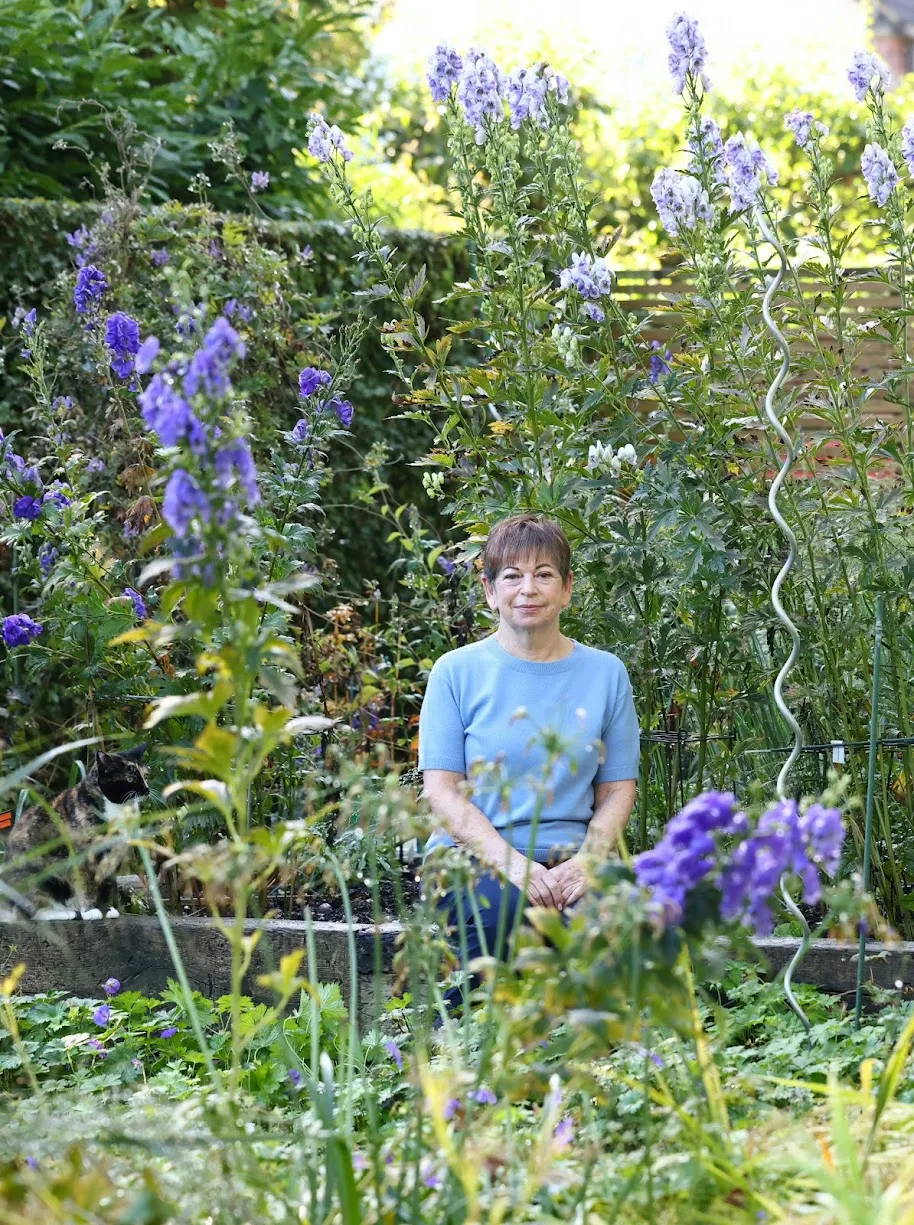
The plant that 'started it all' still has yet to be formally identified, but is thought to be Aconitum napellus 'Anglican Group', and Melanie now has over fifty plants of this variety.

Aconitum, commonly known as monkshood, aconites or wolfsbane, are perennial plants that flower, with varieties flowering from late spring to autumn. We chatted to Melanie about her collection, which contains 40 types of Aconitum and got her expert tips on how to grow them at home.
How to grow aconitum
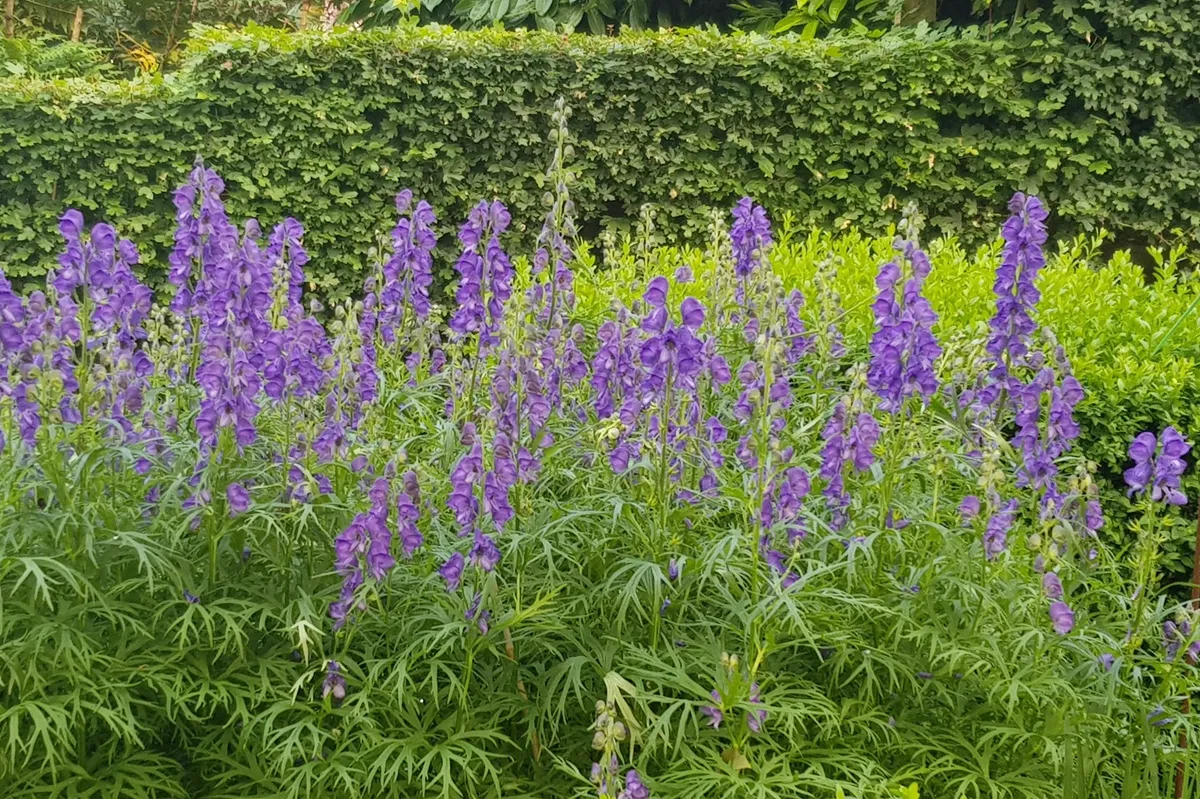
Where to plant aconitum
Aconitum are easy to grow. Most garden varieties are tough plants and will grow in any decent garden soil without needing any extra enrichment. I grow mine in stony, sandy soil on chalk bedrock in full sun or part shade. They do best, however, in a moist soil and are not particularly drought tolerant. They look particularly good in a mixed herbaceous planting or amongst grasses and one of their most attractive benefits is that they are pollinated exclusively by bumblebees. So, if you have Aconitum in your garden, you will have plenty of bees.
How to grow aconitum
Aconitum are best bought as potted plants or bare root. They are very easy to divide and will form well-behaved clumps. Whereas seed can be difficult to propagate and the plants cannot be grown from cuttings, they are propagated by division in autumn or late winter. Most need no staking unless they are scadent, such as Aconitum Japonicum and Aconitum 'Spark’s Variety', both of which grow to a height of in excess of 1.5m with slender stems and stunning deep blue flowers, and there are some spectacular climbing varieties, the best of which in my mind is A. austroyunnanense which has grown to well over 3m this year and is best grown on a tall support.
When to plant aconitum
The most suitable time for planting is early spring or autumn.
When does aconitum flower?
Early flowering varieties, such as Aconitum napellus subsp. napellus (Anglican Group) start to flower in late April/early May and continue into June, by which time most of the Aconitum napellus varieties have come into flower. With the right varieties, you can have aconites flowering in your garden from May well into autumn, when some of the best varieties come into flower, such as Aconitum carmichaelii.
How poisonous is aconitum?
Aconitum, also known as monkshood or wolfsbane is a member of the buttercup family, Ranunculaceae, and contains one of the oldest and most deadly poisons, aconite and aconitine. Aconitine is believed to be the key toxin and ingestion of even a small amount can cause severe gastrointestinal upset. However, it also has the effect of slowing the heart rate which can (in rare cases) cause death. One would have to either ingest the poison or absorb it through broken skin or open wounds, although verified incidents are mercifully rare. To put it in perspective, most of the over two thousand members of the Ranunculaceae family are toxic and that includes hellebores and delphiniums. It’s best to wear gloves when handling the plants as all parts are toxic.
Problems with aconitum
Easy to grow, most Aconitum require no specialist knowledge or treatment and will reappear every year without a problem. All are herbaceous. Their biggest attraction to me is that they are entirely snail and slug proof and rarely suffer from disease. Early flowering varieties die right back after flowering and so it is best to grow them next to a later flowering plant that will fill the gap left. The current summer drought has shown that leaves of some autumn flowering varieties may turn brown if in full sun.
The best aconitum to grow
Aconitum napellus
Aconitum napellus produces deep purple flowers in late May to June. It has strong stems and needs no support. They grow to approximately 1-1.2 metres.
Aconitum napellus 'Album'
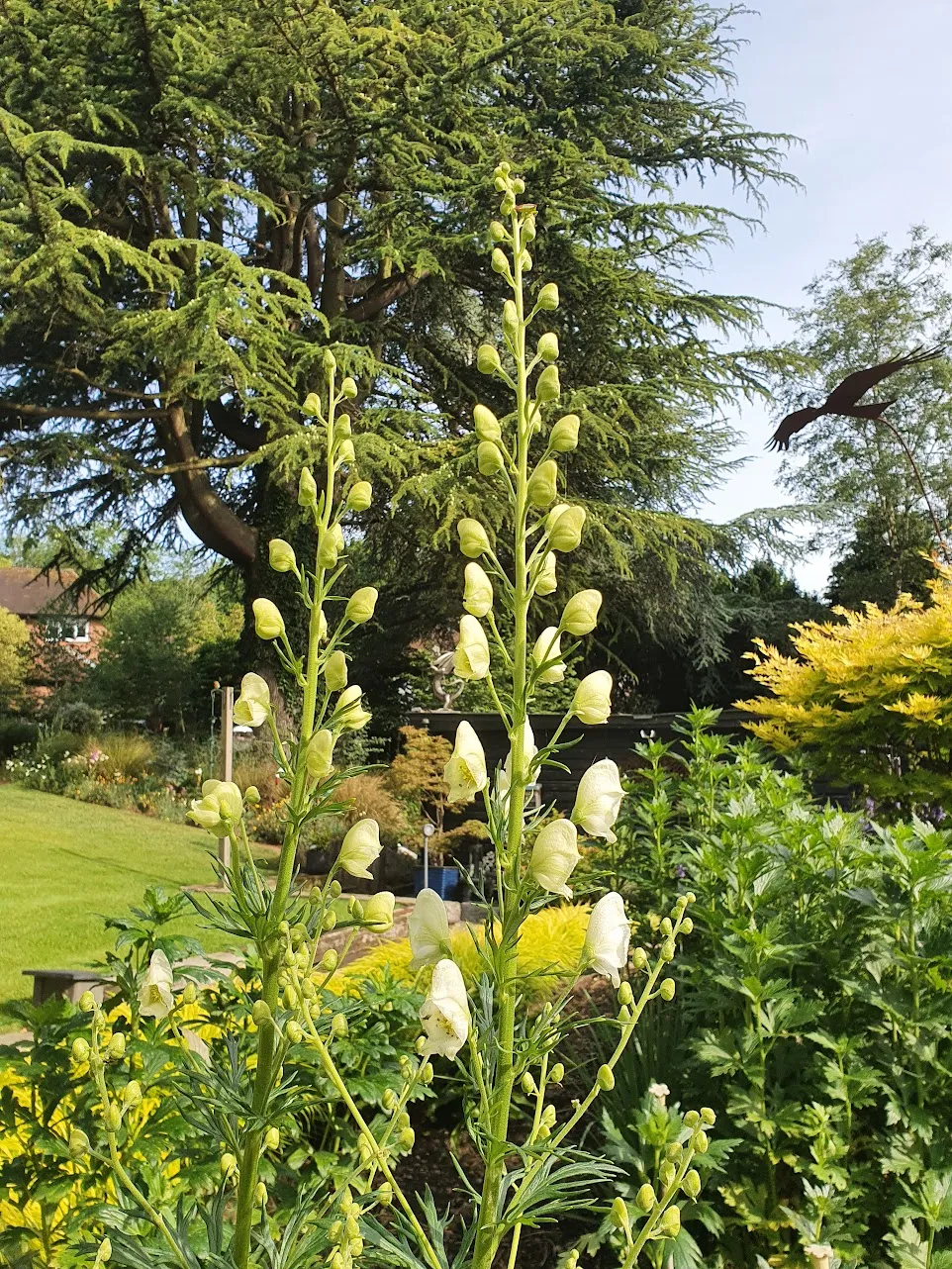
Aconitum napellus 'Album' produces spires of white flowers on strong stems from June to August. They grow to approximately 1.2m high.
Aconitum ‘Stainless Steel’

Aconitum 'Stainless Steel' produces beautiful grey/blue flowers from late May to July. They grow to approximately 1-1.2 metres.
Aconitum carmichaelii (Wilsonii Group) ‘Barker's Variety’
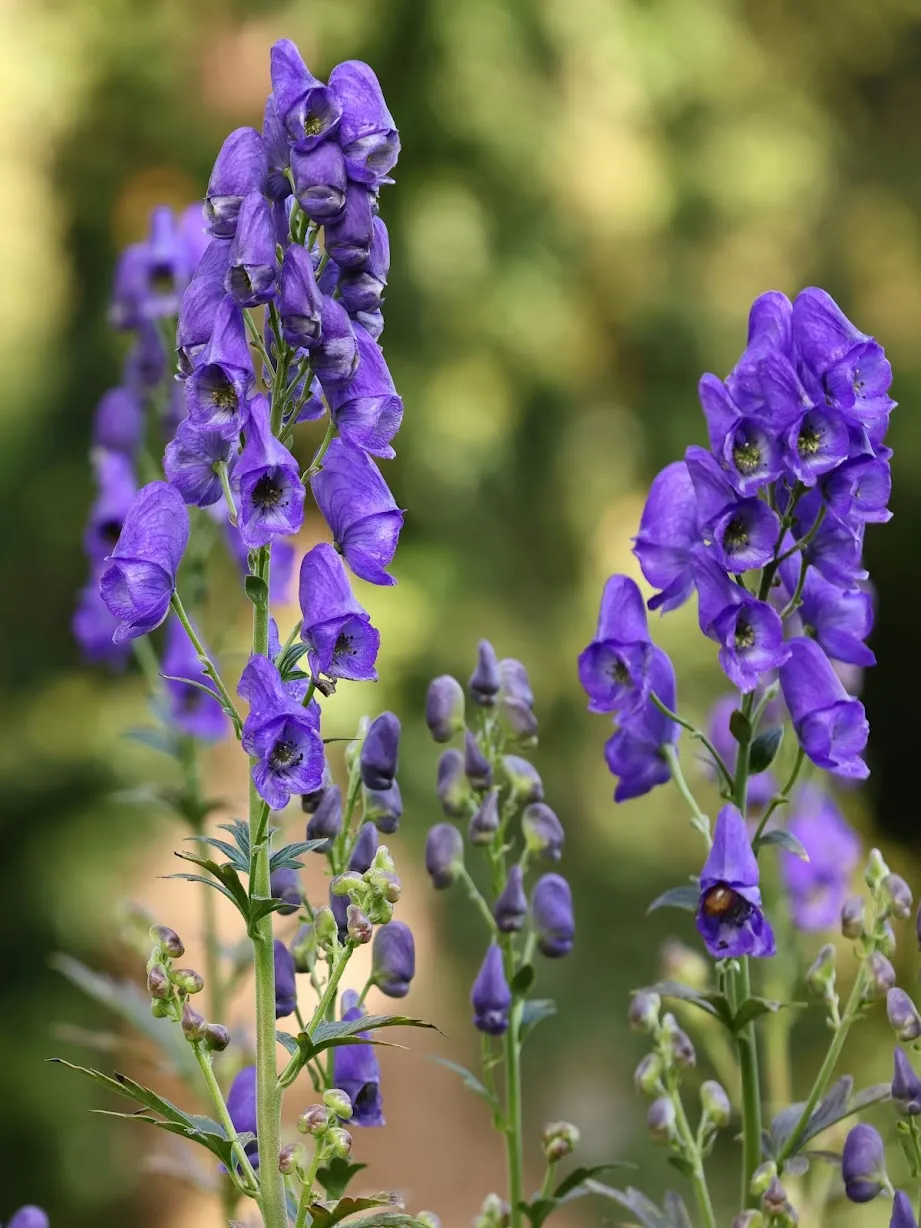
Aconitum carmichaelii (Wilsonii Group) 'Barker's Variety' produces deep purple flowers from later summer to October on very strong, upright stems that need no support. They grow to approximately 1.5 metres.
Aconitum carmichaelii ‘Royal Flush’
Aconitum carmicahelii 'Royal Flush' produces dark flowers similar to 'Barker's Variety' in summer and autumn. The leaves start off with a deep red tinge and turn green. They grow to approximately 1 metre.
Aconitum austroyunnanense
Aconitum austroyunnanense is a rampant but delicate climber that produces purple flowers in later summer and early autumn. It dies right back in the winter which keeps it controllable, but can reach a height of 3 metres.
Aconitum 'Ivorine'
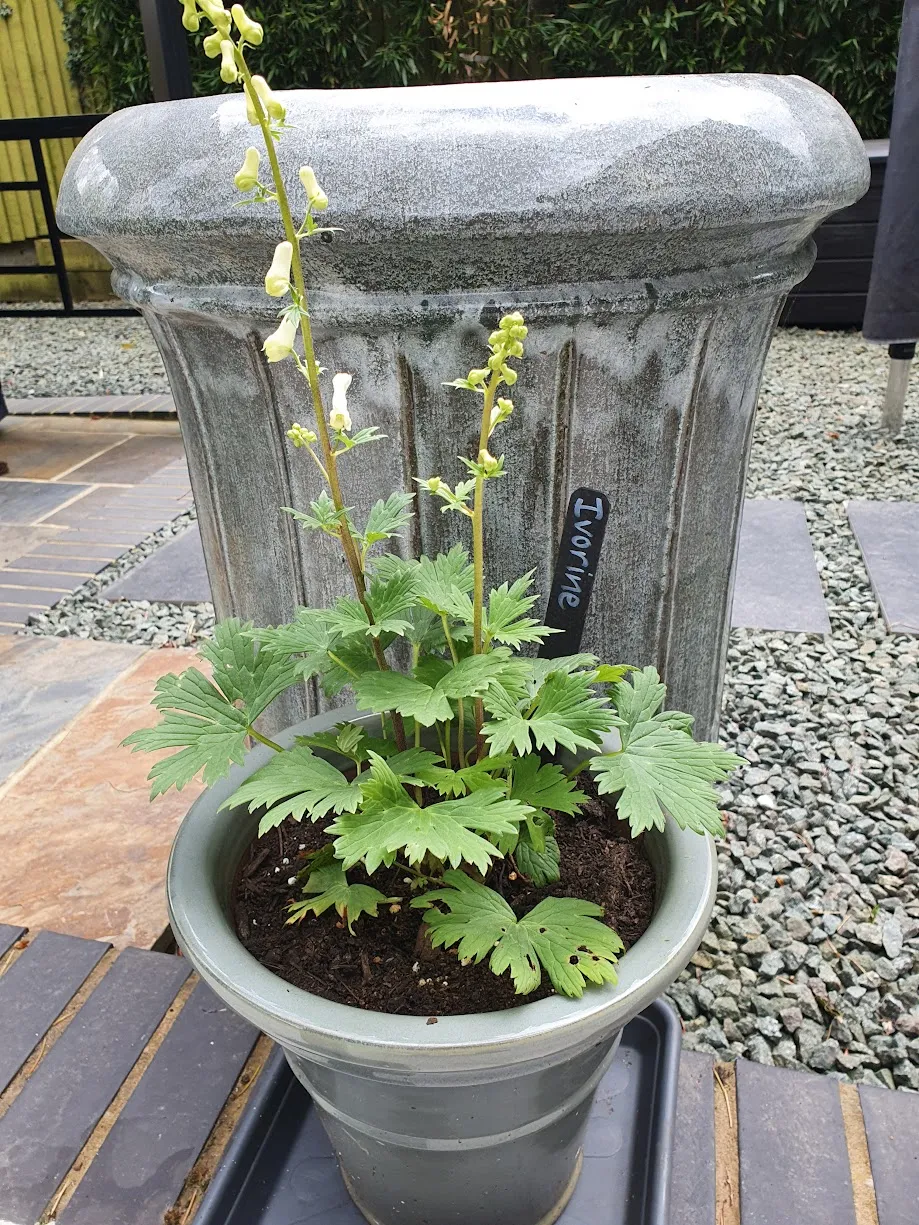
Aconitum 'Ivorine' produces small parchment white flowers from May to July and glossy leaves. It grows to approximately 0.5-1 metres.